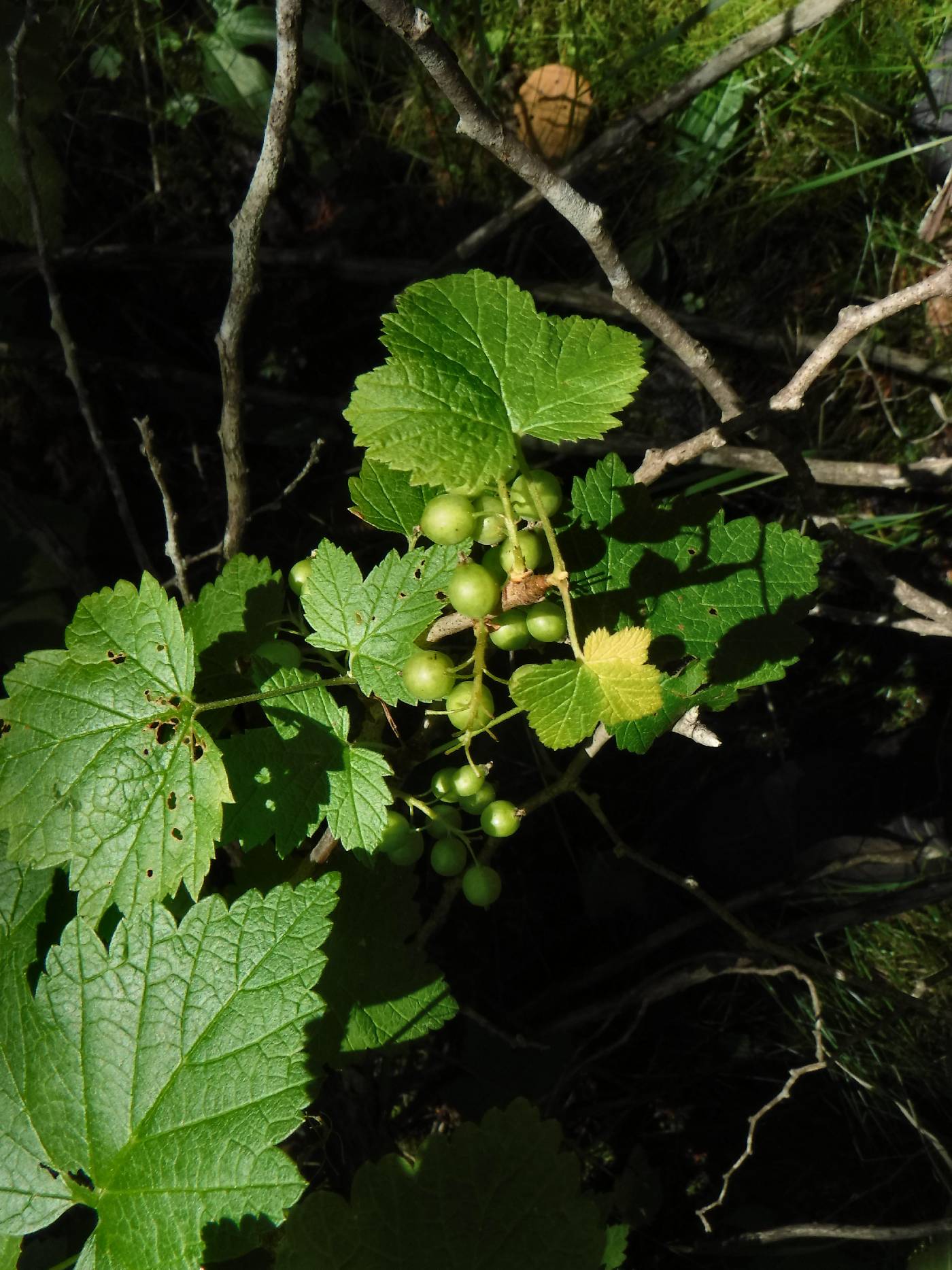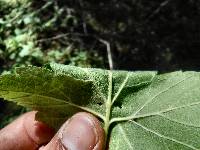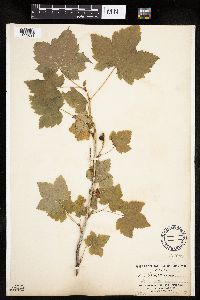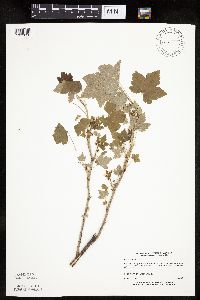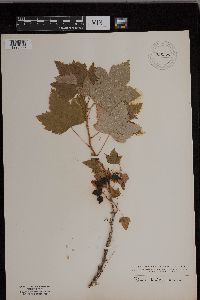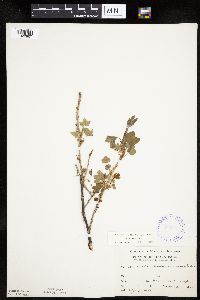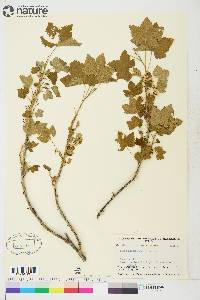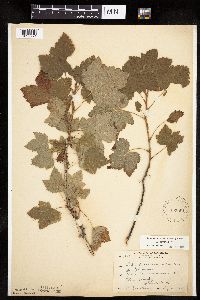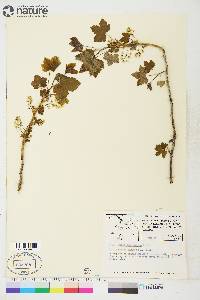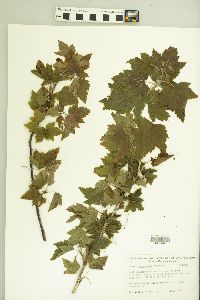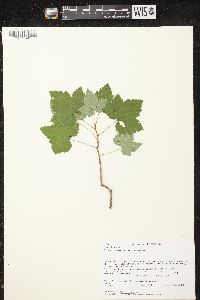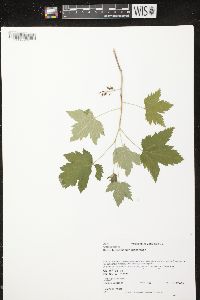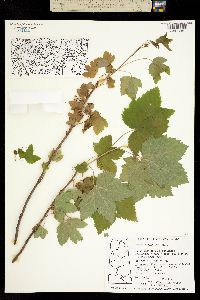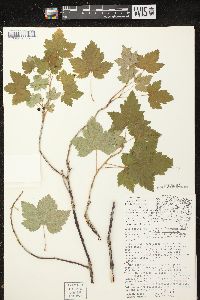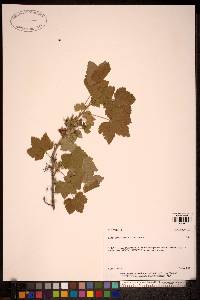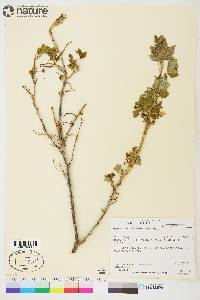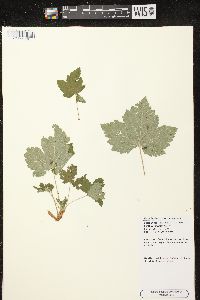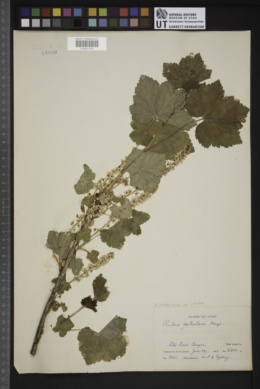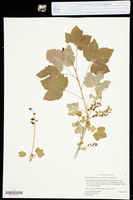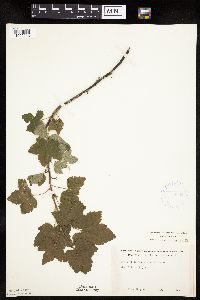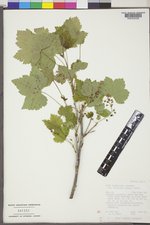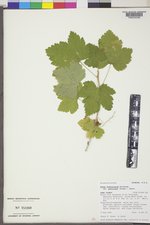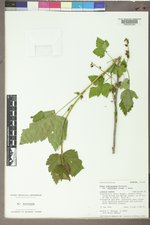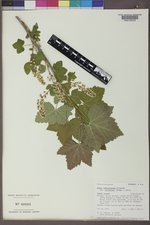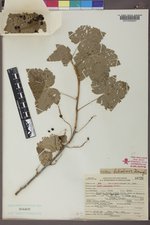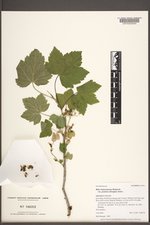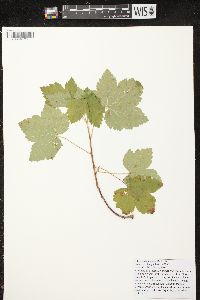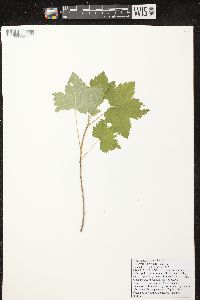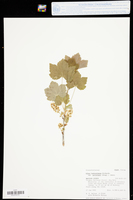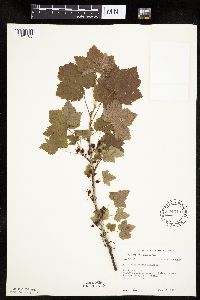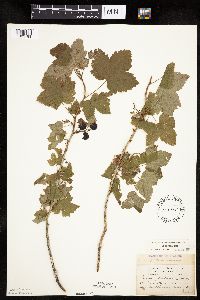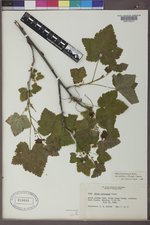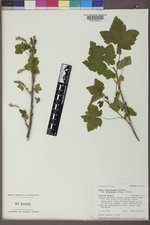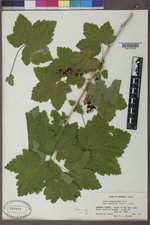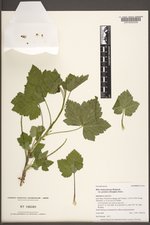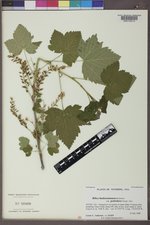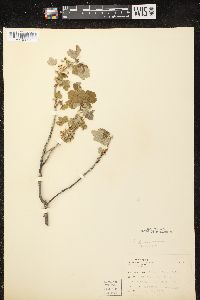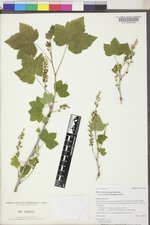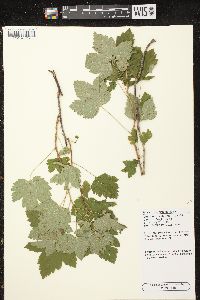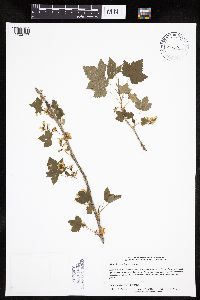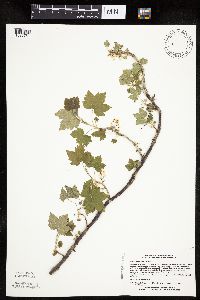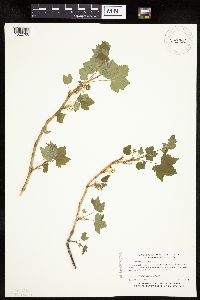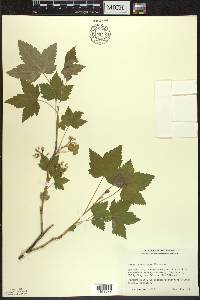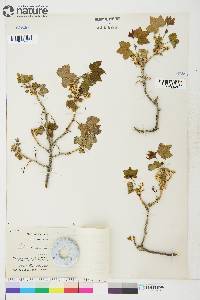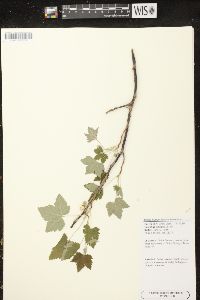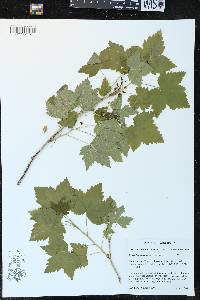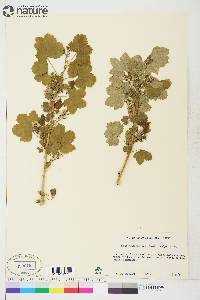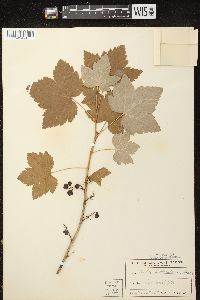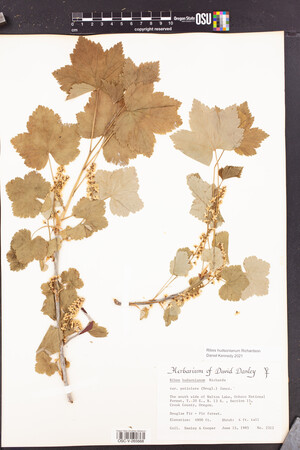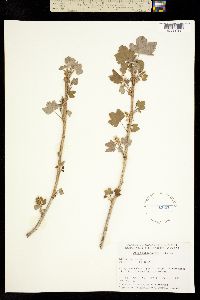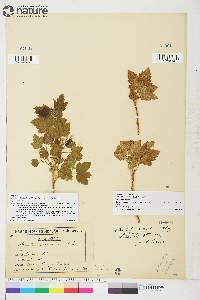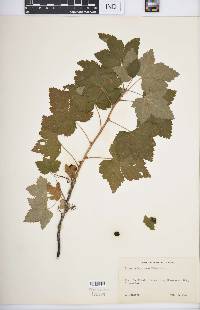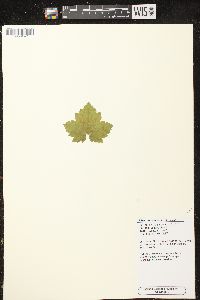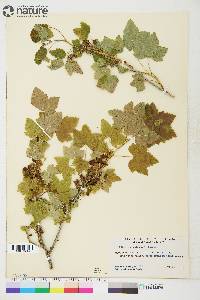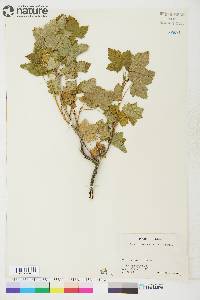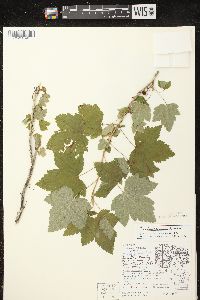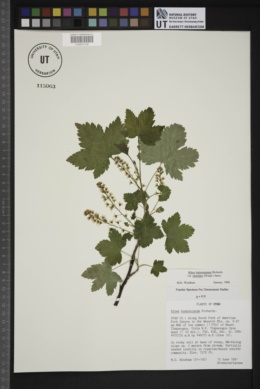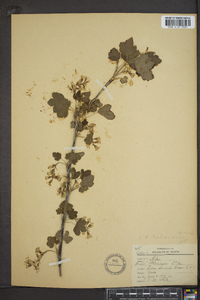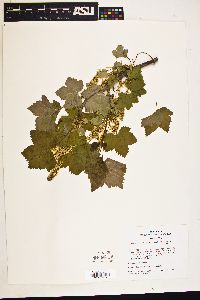
|
|
|
|
Family: Grossulariaceae
Northern Black Currant
|
Plants 0.5-2 m. Stems erect or ascending (no short shoots), sparsely to densely glandular throughout with yellow, shiny, sessile, crystalline, round glands; spines at nodes absent; prickles on internodes absent. Leaves: petiole (1-)2.7-9.5 cm, glabrous or hairy, with scattered, yellow, sessile, round glands; blade reniform to orbiculate, 3-lobed, 2 proximal segments less deeply and very unequally lobed (rarely equally 5-lobed), cleft usually less than 1/2 to midrib, 2-12(-13.3) cm, base deeply cordate, surfaces with yellow, sessile, round glands abaxially, otherwise glabrous or copiously hairy abaxially, sparsely hairy adaxially, lobes broadly deltate, margins coarsely bicrenate-dentate, apex acute. Inflorescences ascending to spreading, 20-50-flowered racemes, 3-17 cm, axis thinly villous, flowers evenly spaced. Pedicels jointed, 0.6-8(-11) mm, short-villous, short stipitate-glandular; bracts lanceolate to linear, 0.5-3 mm, pubescent. Flowers: hypanthium white or green, saucer-shaped, widely flared, 0.6-1.5 mm, with sparse to dense, yellow, sessile glands and densely crisped-pubescent abaxially, glabrous adaxially; sepals not overlapping, widely spreading, white, triangular to ovate-lanceolate or oblong-elliptic, 3.4-7 mm; petals widely separated, erect to spreading, white or pinkish, oblong, becoming cuneate-flabelliform and obscurely 3-lobed distally, not conspicuously revolute or inrolled, 0.9-2 mm; nectary disc pale green, thin, partially covering ovary; stamens as long as petals; filaments linear, 1-1.1 mm, glabrous; anthers maroon, sometimes cream, oval, 0.4-1 mm, apex with small-holed callus, sessile- or stipitate-glandular; ovary sessile-glandular, stipitate-glandular, or sparsely hairy, rarely glabrous; styles connate 1/2+ their lengths, 2 mm, glabrous. Berries bitter, not palatable, black, ± glaucous, subglobose, 5.5-12 mm, glabrous except for yellow, sessile glands. Flowering Apr-Aug. Stream banks, moist woods, thickets at edges of mountain meadows, treed bogs, swamps, shaded rock outcrops, deciduous, mixed, and coniferous forests on moist to wet organic and mineral soils; 300-3300 m; Alta., B.C., Man., N.W.T., Ont., Que., Sask., Yukon; Alaska, Calif., Colo., Idaho, Iowa, Mich., Minn., Mont., Nev., Oreg., Utah, Wash., Wyo. Plants of Ribes hudsonianum with leaf blades that are pubescent abaxially and mostly lack sessile glands, and have ovaries with sessile glands, have been recognized as var. hudsonianum; those with leaf blades that are shaggy-hairy abaxially and sessile-glandular, and have ovaries lacking such glands, have been named var. petiolare. Variety hudsonianum has a more northern distribution; var. petiolare is western. Where their ranges overlap, for instance in Saskatoon, pubescence density varies continuously and does not correlate with presence or absence of glands (V. L. Harms, pers. comm.). Ribes hudsonianum is a major host of blister rust; in early literature it is referred to as R. petiolare (E. P. Van Arsdel and B. W. Geils 2004). It has a strong, sweetish, unpleasant odor, and bears its leaves on long shoots.
Stem erect or ascending, unarmed; lvs shallowly to deeply cordate, 5-lobed, gland-dotted beneath and sometimes also minutely hairy; racemes erect or ascending; pedicels 3-7 mm, much exceeding the minute bracts; hypanthium above the ovary saucer-shaped, 1 mm; sep white or nearly so, oblong-elliptic, 3.5-4.5 mm, densely hairy outside; pet cuneate-oblong, 1.5-3 mm, obscurely 3-lobed; ovary usually with a few sessile, resinous glands, otherwise glabrous; fr black. Swamps and wet woods; n. Ont. to Alas., s. to Mich., Io., Wyo., and B.C. May, June. Gleason, Henry A. & Cronquist, Arthur J. 1991. Manual of vascular plants of northeastern United States and adjacent Canada. lxxv + 910 pp. ©The New York Botanical Garden. All rights reserved. Used by permission. |
This project was made possible in part by the Institute of Museum and Library Services [MG-70-19-0057-19].
Powered by Symbiota

